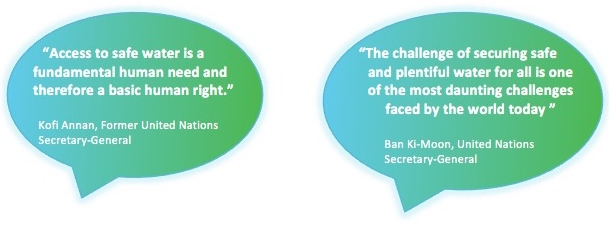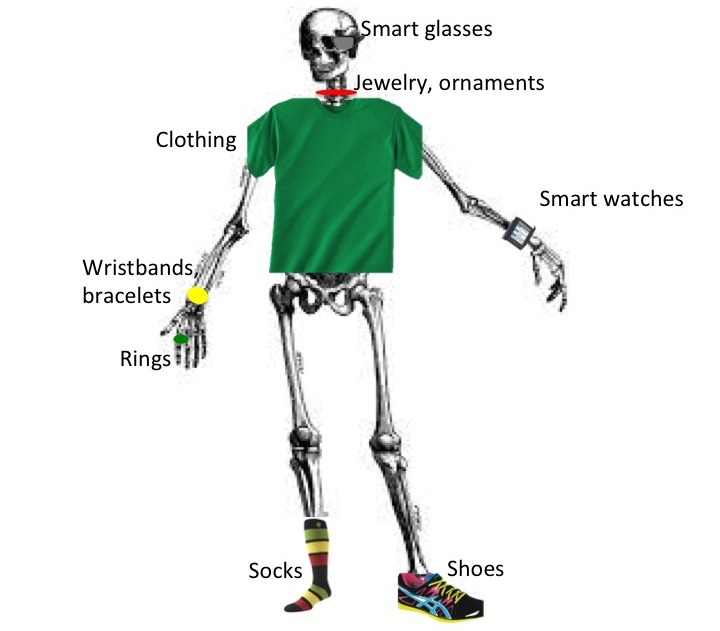Sci-fi is here. As intelligence breakthroughs continue, expect more questions about how humans manage the race with – and against – the machines. Will we be outnumbered, outdated, and outthought, or can
Continue
Sci-fi is here. As intelligence breakthroughs continue, expect more questions about how humans manage the race with – and against – the machines. Will we be outnumbered, outdated, and outthought, or can
ContinueIn a world of rapid change, traditional business models are no longer enough to stay in business and to create value for the consumer. In this month’s briefing we explore how established business models are being disrupted – by new technologies, entrants and ideas of value – and how firms can strive to stay ahead.![]()
Ahead of the Paris summit on climate change, our latest briefing offers a reality check on the climate situation, a look at the opportunities and influencers and some examples of organizations taking on the challenge. ![]()
May 2015: Like all of us, the next generations Gen Y (typically defined as 1980 to 1994) and Gen Z (typically defined as 1995 - 2009), are shaped by their times. Generation Y is the first transformational generation. They have grown up in a radically different world from that of their parents, surrounded by modern technologies and a society of consumerism – and it shows in the way they live, work, play, and consume. While some of Generation Y may vaguely remember a world with only limited technology, today’s teenagers, Generation Z, have never experienced a world without it. Technology is in the DNA of these “next” generations, probably the single most important difference versus the generations before them.
For today’s digital generations, flexibility, mobility, and immediacy are king. Their attitudes and behaviors are permeating every facet of life and work, embracing the virtual, living in real time. They are coexisting with, if not thriving on, social networking, the cloud, and cyberspace demands that are often seen as overwhelming by many older people. An increasing move towards flexible and mobile ways of working is one result, as the younger generations challenge conventional and stationary working patterns and management methods – but their impact will be much broader.
ContinueApril 2015: When conveying the value of things money is a common language that we all understand, from the most educated and developed regions, to the less developed areas of the world. While paper money hasn’t always been around, the concept of money has played a central role in developing our modern international economies and trade networks.
For thousands of years humanity has bartered the goods they had in surplus for those they lacked, a form of trade that is still in full swing in the 21st century. The first known “official” currency was introduced in Turkey in 600BC and, around 1661 AD, coins evolved into bank notes. In 1946 the first credit card was introduced and since the start of this century technology advances have disrupted the world of money more than once. In 1999 European banks started offering mobile banking while in 2008 contactless payment cards were issued in the UK for the first time.
Driven by mobile and internet technologies, we are now in the early stages of fundamentally changing how we handle and think about money, not to mention who is handling our money and transactions. Financial control is no longer only in the hands of the financial industry. Today entrepreneurial minds are connecting us to our (and others) money in new and innovative ways.
Let’s have a look at how the perception of money is redefining economic unions, trade and power – and at how innovative technology advances are disrupting the world of money and transactions.
ContinueMarch 2015: Discouraged by high levels of youth unemployment and sluggish economies globally, and looking for a way to make an impact in a job that has meaning for them, increasing numbers of young people are turning to the employer of choice: Myself. With new technologies and social and financial innovations redistributing production, consumption, and knowledge around the world, the barriers to entry for a new business in many industries has never been lower. Want to teach your expertise? There’s a platform for that. Want to create a new product? The 3D printing factory is just around the corner. Want to run your company virtually? There have never been more technologies available to let you do so.
Governments around the world are encouraging this growth in entrepreneurship, reality media shows such as The Apprentice are showcasing possible future stars of the genre, and the topic is becoming well established in academic institutions. Today, unlike a couple of decades ago, “entrepreneur” is an increasingly aspirational career path. However, there is a caveat: While new businesses can create jobs and fill gaps in the market created by the economic squeeze on big corporations and public services, it’s not just about measuring the numbers of new businesses. Many startups do not succeed, and many do not deliver on innovation, an activity which is ever more closely associated with the term “entrepreneur.” A key test of whether the entrepreneurial economy is really driving innovation, productivity and economic growth over time is whether startups can scale up to spawn the next generations of larger, global companies and even billionaires.
In the future entrepreneurship will not though be restricted to new players – large companies are actively pursuing the capabilities and ways of working that make their smaller brethren faster, more flexible, and more innovative.
In this briefing we look at the changing world of entrepreneurship in terms of business models, funding and access to resources, how we are educating the next generation of entrepreneurs – and how big business is trying to get in on the act.
ContinueFebruary 2015: Demand for many resources already exceeds what the planet can supply. A rapidly growing global population and rising incomes in many parts of the world means more people, consuming more resources: Food, water, and energy, as well as goods and services. Already we are well past the point where the Earth can replenish the resources we consume and if current consumption trends continue, by the mid-2030s analysts suggest the world’s population will demand twice as many resources as the planet can supply – risking disasters and conflicts as people and nations compete for ever scarcer resources.
Water is now being referred to as the “new oil.” Increased per capita use in rapidly developing economies (RDEs) and greater scarcity of freshwater worldwide, exacerbated by pollution and climate change, means individuals and businesses will need to reassess the value of what has been to date a “free” resource. There will likely be increased geopolitical tensions over control of water supplies, given that well over half the world’s countries share critical water resources with other nations. In this briefing we explore the challenges around increasing water scarcity as well as some innovative ways that these are being tackled.

Also see our slideshow presentation of The Water Challenge
ContinueJanuary 2015: The only constant in the 21st century is change.Geopolitical turbulence and technological advances will be just some of the factors shaping the year ahead. Creating a point of view about ongoing and future trends is increasingly important to thrive in an ever more complex and competitive world. In 2011, when we typed Trends for 2011 into Google on January 1st 2011 it gave us around 46 million results. As we typed Trends for 2015 in January 1st 2015 it gave us 579 million results. The number and diversity of opinions about what’s in store for the forthcoming year is exploding – making it harder to sift the important from the irrelevant, and to develop that critical point of view.
Looking ahead to the next year, and even further, here’s our annual round-up of where you can find some of the more interesting and useful trend forecasts and ideas for 2015. As always, treat them as directional and informed opinions that can supplement your own thinking on what might be possible, feasible and desirable. The biggest challenge for leaders is not finding the most accurate predictions. Rather, it is about developing a broad and open understanding of the trends reshaping the world, translating these into an informed point of view on the future and what it means for your organization and, and most importantly, taking actions today to begin to prepare. The biggest risk is not being wrong in your point of view about the future, but beginning to take action too late.
So let’s take a look.
ContinueNovember 2014: Technology is moving off the desktop and on to the body. While technology already plays an essential role in our daily lives, new wearable technologies have the ability to take the relationship between people and technology even further. These emerging technologies could allow people to interact better with technology and, at the same time, enable more meaningful experiences by extending the reach of interpersonal and machine-to-person communication. The advantages of this new generation of wearables are many, e.g. they are hands-free, always-on, environmentally-aware, constantly connected, and attention-getting, there are also many drawbacks such as the constant urge to check the information the devices are providing. Even more important are the significant concerns regarding data privacy as well as moral, social and ethical issues.
 Widely proclaimed as “the next new thing,” in reality, the wearable concept is nothing new.For centuries, human beings have adorned their bodies with gadgets, whether for utility or show or both. While it has existed for decades, the concept of “wearables” did not really take off before 2011 when Google developed its first prototype of what is now known as Google Glass.
Widely proclaimed as “the next new thing,” in reality, the wearable concept is nothing new.For centuries, human beings have adorned their bodies with gadgets, whether for utility or show or both. While it has existed for decades, the concept of “wearables” did not really take off before 2011 when Google developed its first prototype of what is now known as Google Glass.
Today, the next generation of wearable technologies encompasses a wide range of devices and products, e.g. wristbands, rings, glasses and watches, and chances are that in the not too distant future you will be able to buy, for instance, clothing and footwear that tells you the weather or sends you a message to remind you to work out. Wearables have the ability to give us far more control over our lives and in particular our health – but we need to be aware of the challenges.
NEW: Also see our slideshow presentation of Wearables: Fab, fashion or functional?
ContinueOctober 2014: Affluence, consumption, and waste go hand-in-hand. Countries are becoming richer, urbanization is exploding, new technologies are constantly being launched, and the global middle class is growing, all of which is changing the global waste landscape. More money buys more products, increasing garbage from packaging material, to broken toys, to electronic devices and appliances. Make, use, and throw away has become the mindset of the generations following the Industrial Revolution.
Global waste has increased ten-fold in the last century. The urban lifestyle, in particular, is rapidly changing how much waste is generated as urban-dwellers produce four times as much waste as people in rural areas. While today the developed world is the biggest producer of waste, the developing world is rapidly urbanizing, getting richer, and consuming more as populations also grow. Already East Asia has the dubious role of being the world's fastest growing region for waste but this is likely to be ceded to South Asia (mainly India) by 2025, and then to sub-Saharan Africa around 2050. (Source: Nature)
Current levels of consumption and waste generation are clearly not sustainable long term. As we fill up, in many cases already overflowing landfills, the environment is suffering. Waste-driven environmental hazards are becoming a huge headache for many countries as toxic leakages from landfills and plastic in oceans and rivers damage – if not destroy – the world’s ecosystems.
However, trashing our planet is not the only reason that it is critical to reduce the piles of waste accumulating around the world. With an insatiable demand for the “new,” world consumption patterns are draining our natural resources while health epidemics emerge as a consequence of affluence. Think obesity, diabetes and other lifestyle illnesses.
The most effective solution to solve the world’s waste problem is not to waste at all – societies worldwide are demanding that companies, governments, and communities take action to reduce current and future trash piles. An increasing number of organizations, both private and public sector, are taking on the challenge by using and developing new technologies, as well as rethinking production processes and product design. However, the biggest challenge of all will be to change the mindset of the modern consumer towards wasting less by recycling and reusing, and ultimately by consuming less and smarter.
NEW: Also see our slideshow presentation of Waste: Avoiding, Managing or Designing it Out
Continue